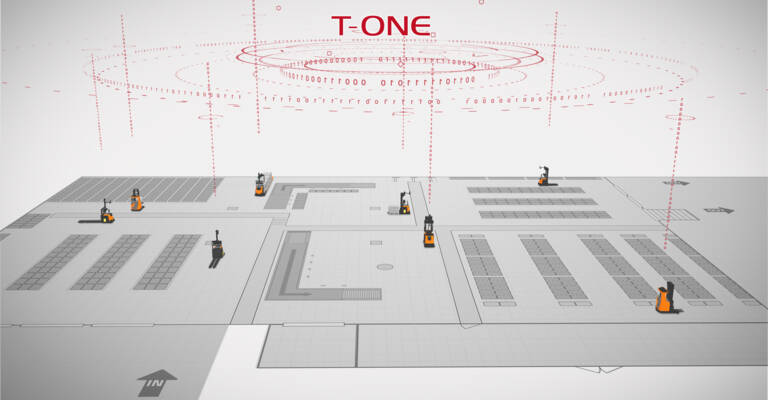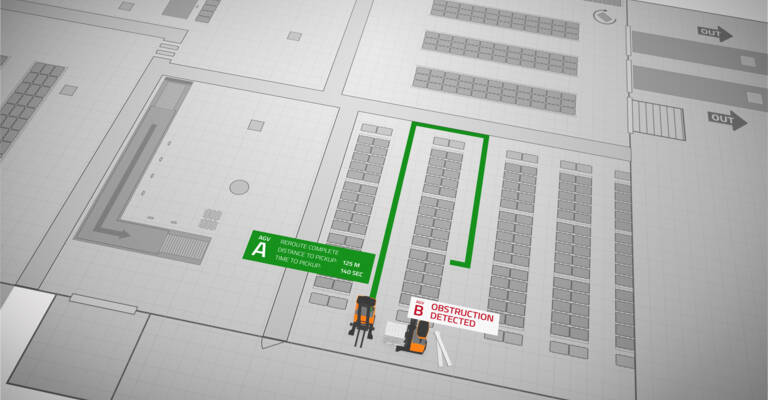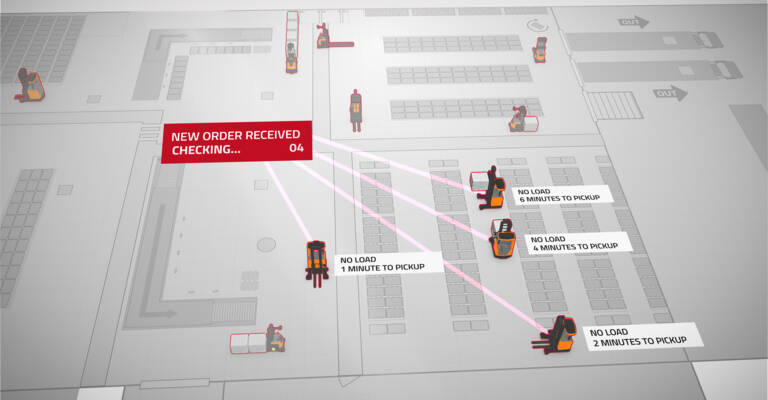Intelligent automation software, T-ONE
Connecting your intralogistics processes
T-ONE, Toyota’s in-house developed automation software, is installed as an integration layer communicating with the Toyota Autopilot automated guided vehicles (AGVs) and existing infrastructure such as warehouse management systems, goods identification and other material handling equipment. T-ONE offers a modern, service-based architecture, with well-defined API’s (Application Programming Interface) for easy integration to the platform.
The intelligent software offers operational robustness and flexibility for easy scaling of your operations and quick commissioning. This makes it suitable for applications with a significant number of vehicles. The solution can be configured for a variety of flows and provides a customisable user interface for the operator supporting manual interaction with the AGV system, the Autopilots. T-ONE provides a set of performance metrics, with graphs presented in the user interface.
What does T-ONE stand for?
How T-ONE orchestrates your operation
T-ONE is at the heart of Toyota’s automated solutions: it supervises & optimises your complete operation. This intelligent automation software takes care of the order and traffic management of the Toyota AGVs and offers many functions such as:
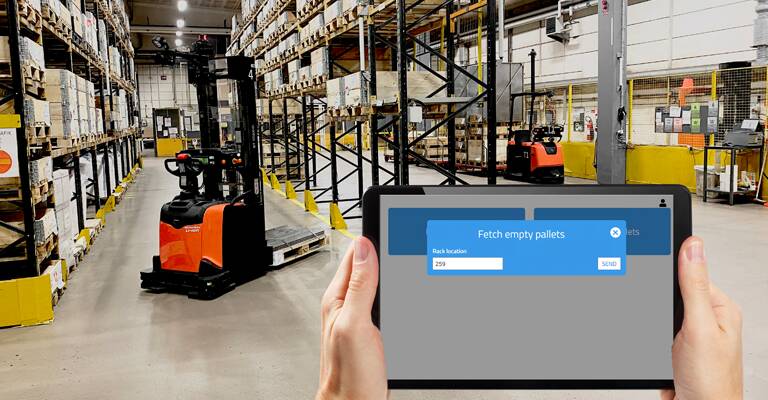
Order initiation
T-ONE can start orders in several ways to suit your operation, for example via your Warehouse Management System (WMS), buttons pushed by operators at work stations (Toyota offers CallMe Screen/CallMe buttons) or customisable web GUIs suitable for mobile devices. Also I/O signals (typically photocells, physical buttons or PLCs) or barcode scanners (handheld, or mounted on a conveyor) can be used to initiate an order.
Destination setting
The destination of an order can be determined when initiating the order or dynamically after ID scanning at pick-up. The automation software from Toyota also allows you via the tables feature to select a destination based on a scanned value, an I/0 signal, or any other value. This mapping can be controlled by the operator and can be for example different in the morning than in the afternoon.
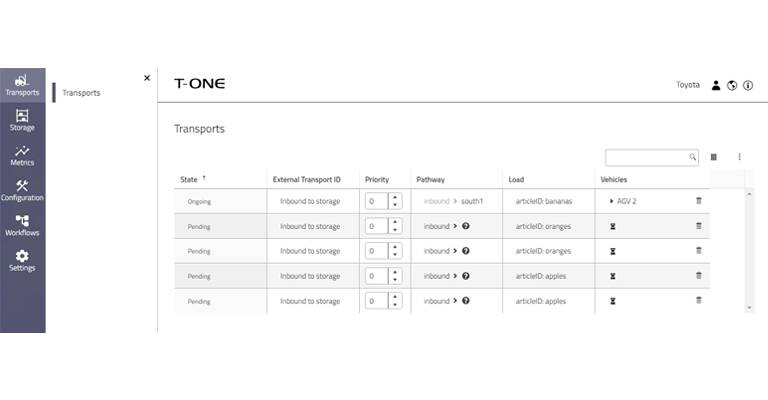
Transport management
T-ONE manages the sequence in which the orders are carried out: different priorities can be handled by the WMS, T-ONE or a first-in first-out concept can be used. An order can be set to handle a single transport, to empty a full lane or an entire area. An order can be executed in various flow presets:
- as A-to-B transports between 2 stations
- as a loop with a number of route stops for replenishment/picking purposes
- as a “multi-leg” transport where more than one vehicle takes care of the transport to use the best suited vehicle type for each task
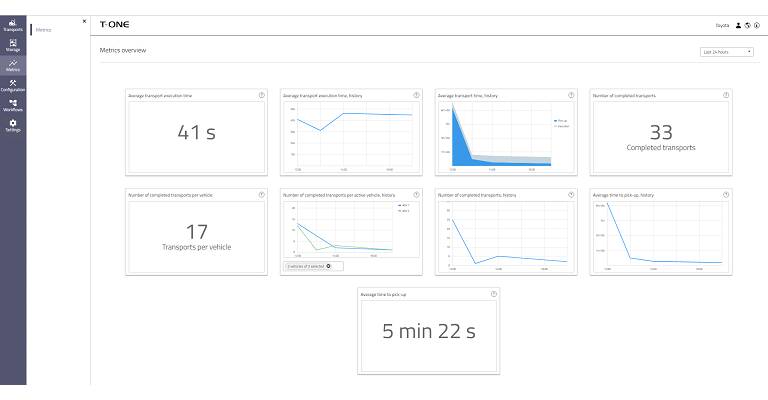
Metrics and errors visualisation
T-ONE provides a set of performance metrics, with graphs presented in the user interface to visualise the performance of the system:
- Transport overview: current or recent transports including pick-up station, destination and load.
- Metrics: historical transport data for the last 30 days.
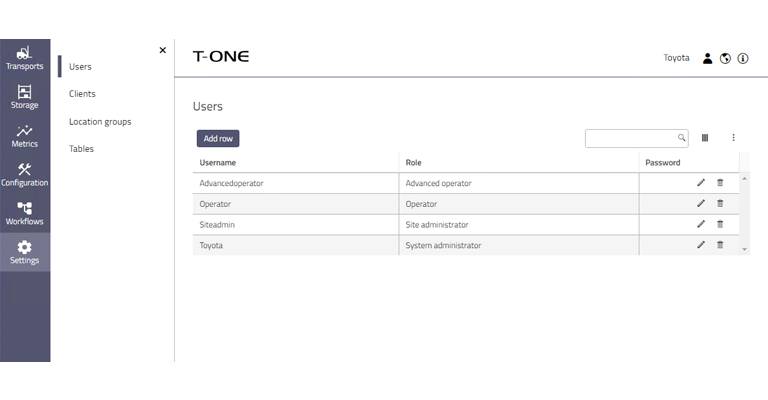
User & security management
T-ONE provides user management to support secure handling of the AGV System:
- The site administrator can create users and assign appropriate permissions level
- Individual user authentication to provide access and display the appropriate information and controls for each user
- Audit trails providing information about log-in and user activities
- Industry standard SSL/TLS encryption of all traffic between browsers and the T-ONE server, preventing traffic from being intercepted or inserted
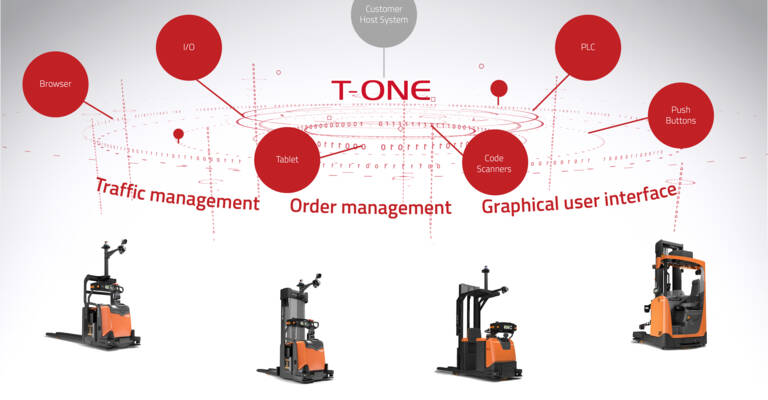
System integration
Toyota’s automation software can integrate with systems at your site, such as:
- WMS (REST interface)
- OPC DA (True/False signals, e.g. PLCs, conveyors, robot cells, doors, fire alarm)
- OPC UA (PLCs, conveyors, robot cells, doors, fire alarm)
Battery Management
The Autopilot vehicles can be equipped with lead-acid or li-ion batteries. Lithium-ion batteries allow for opportunity and automated charging.
With the battery management function, rules can be set up about when the vehicles in the system should charge. The optimal charging scheme depends on factors such as the customer layout, required throughput, vehicle fleet and battery type. The Autopilots from Toyota support fallback charging, opportunity charging and scheduled charging.
Contact us

Contact us
First name Last Name
Logistics Solutions Manager
+12 345 6789
firstnamelastname@toyota-industries.eu
![[EN-IE]Toyota Material Handling [EN-IE]Toyota Material Handling](https://d3e4vwrh8ezn7i.cloudfront.net/a0/9f/4ec25dfb40c29a3b359d9a698867/fork-truck-services-logo.jpg)
